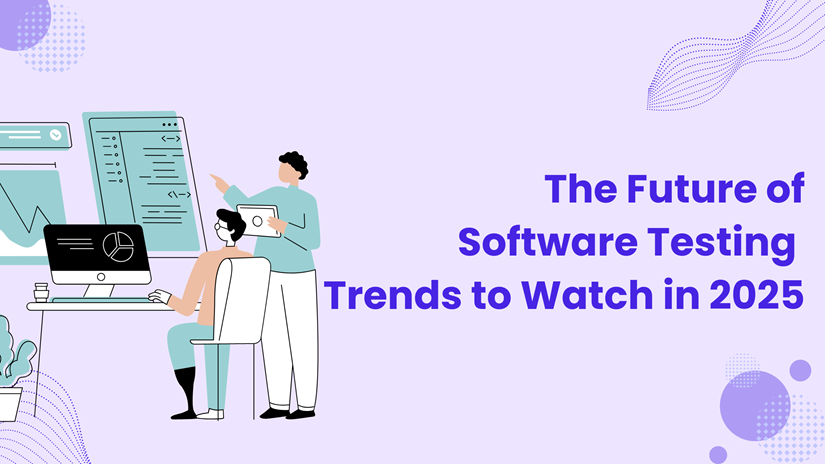
- January 30, 2025
- Manish Kumar Tiwari
- 0
Table of Contents
Introduction
Software Testing has become most crucial part of software development process as it ensures quality, reliability,usability and customer satisfaction of the software application. With the passage of time the complexity of application keep on increasing thus increasing the importance of software testing. The future of software testing is bright as it is driven by Artificial Intelligence and other advanced technologies as per the business requirements. Below are some of the important trends to watch.
Future Trends
1. Artificial Intelligence(AI) and Machine Learning(ML) in Software testing:
Artificial Intelligence and Machine Learning have significant contribution towards software testing through test case generation, defect detection etc. In the year 2025 software testing will depend heavily on AI tools to achieve the following goals as mentioned below:
Increased Automation tests:
AI can detect and identify potential defect areas and can create a lot of automated test scripts thus reducing human efforts.Self healing tests:
Testing tools powered by AI can adapt automatically to the various changes made in the code thus making the tests more efficient and reducing maintenance costs.- Improved Test Coverage: Machine learning tools help to optimize the test coverage by detecting the unnecessary test cases and thus paying attention to most critical test scenarios.
2. Continuous Testing and Shift Left Testing:
Continuous Testing:
With the evolution of devops tools and agile methodologies, continuous testing has become an important part of software development process.Tests execution will happen simultaneously with software development thus providing real feedback on quality of code. This will enhance the software quality thus keeping in sync with faster delivery cycles.Shift Left Testing:
It refers to the testing taking place at the early stage of software development life cycle. In the year 2025 , early testing process will be an inseparable part of software development process thus allowing teams to detect issues at the early stages before it becomes costlier at the later stages of software development.
3. Cloud based Testing: With the rapid dependence on cloud infrastructure, cloud based testing will be important for testing complex applications on a large scale. Cloud environment provides the following:
- Scalable testing environment: Testing software applications in different environments and platforms can be maintained effectively in the cloud.
- Cost Effectiveness: With the help of cloud based testing tools ,on demand resources can be accessed easily thus reducing the costs of maintaining physical hardware systems.
- Distributed Testing: As the testing teams get connected globally, the cloud based testing tools enables better coordination and test execution in different locations and time zones.
4. Automation Frameworks and No Code Testing:
- No code Testing tools: The no code testing tools will become extremely useful and popular in the year 2025 and above thus enabling non technical persons for designing and executing test scripts.This allows testing teams to expand thus reducing the dependence on skilled automation testers.
- Scalable Automation Frameworks: Automation frameworks will be scalable thus helping the test teams to customize their test scripts more efficiently for testing complex applications.
Conclusion
Automation testing tools have been playing a significant role in seamless automation testing of software applications. They reduce time and energy of developers and testers compared to manual testing by testing more complex functionalities of software applications thus ensuring a good quality of application is delivered to clients. Every automation tool have its own strength and weaknesses and is selected based on different parameters like project requirements, budget ,testing types etc. A proper evaluation of tools helps testers to select the best tool for effective testing.


